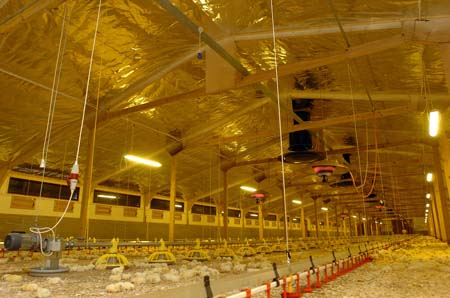
New orders from Uganda and Fiji bring to 16 the number of countries now adopting the energy-efficient lining Valéron AVA to improve poultry house environment through use of a durable radiant barrier.
Allan Meldrum, director of Food Chain Innovation, said that the latest orders mean that the product is being used across the globe from Fiji to Jamaica.
In Uganda one of the largest poultry producers is using Valéron in a major expansion, involving refurbishment of older houses as well as construction of many new houses totalling more than 35,000 sq m, while in Fiji the product is being evaluated for potential use across 18 houses.
“There is growing acceptance that a very durable radiant barrier is reducing heat stress issues by making the birds more comfortable and allowing them to attain much more of their genetic potential,” said Allan Meldrum.
“We know that Valéron reflects up to 95 percent of radiant heat — 50 percent more than cheaper alternatives. We have many examples of better performance in broilers and breeders due to this dramatic reduction in radiant heat.
“Throughout the world producers who’ve used Valéron continue to do so, and we are regularly adding to our customer base. We have personal experience of the product’s durability over seven years and are aware of other installations with over 15 years’ continual use.”
The enhanced radiant barrier can save up to 30 per cent on brooding cost, he stated, with initial heating-up times reduced to a few hours from the usual 24 hours or more because the product’s ability to completely seal a unit.
“We see improved litter quality through better environmental control, and less 'topping up' with some companies reporting a 25 per cent saving in litter usage.
“We’ve also experience of producers increasing stocking density because of improved overall conditions within the unit — typically increases of 15 percent and even 25 percent on one farm in Jamaica where there was also a 180 gram improvement in liveweight gain at 41 days.”
